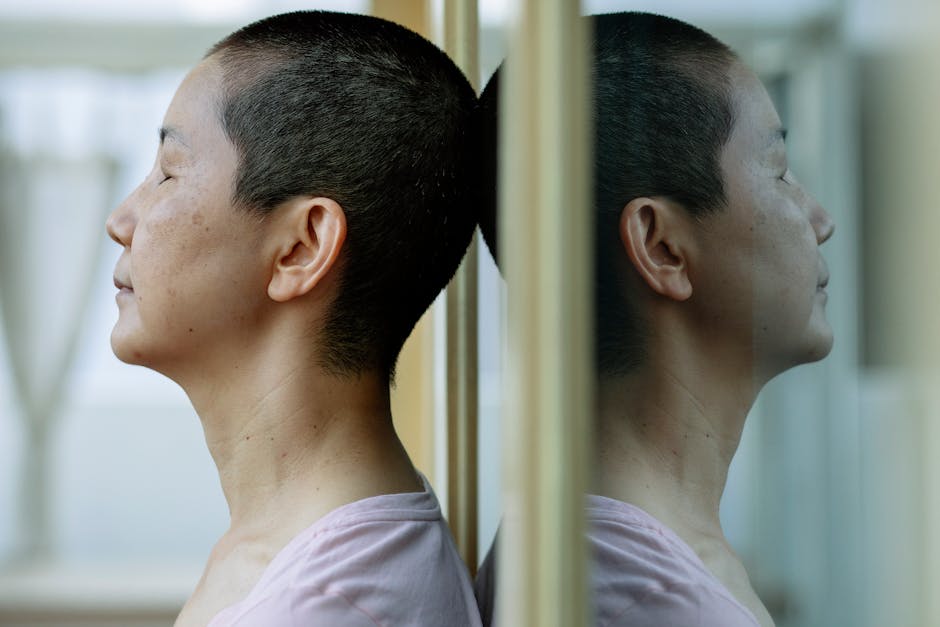Introduction to Anxiety
Can you recall a time when your heart pounded, your hands trembled, or your thoughts raced so fast it felt impossible to keep up? You might have brushed it off as a one-off creep of stress or fatigue. But what if it was more? What if it was anxiety? Probably a word we’ve all heard, perhaps tossed around in casual chats. But what exactly is anxiety?
Anxiety is an emotion characterized by feelings of tension, worry, constant dread about future events, and even physical symptoms, like increased blood pressure, sweating, or rapid heartbeat. Often misunderstood, it’s not the same as fear. Fear is an immediate, short-lived response to a real, present threat. On the other hand, anxiety is more about anticipation of a future threat. It’s diffuse, complex, and often long-lived.
But anxiety isn’t just an uncomfortable feeling or a minor inconvenience. When it blooms into an anxiety disorder, it becomes a constant, overwhelming, and sometimes incapacitating concern.
Even for therapists like us at DBT of South Jersey, anxiety can unexpectedly surge, leaving us disoriented and possibly, like one of our therapists, dialing 911 mistaking a panic attack for a life-endangering condition.
Key Points about Anxiety:
- Anxiety is a strong emotion characterized by feelings of tension and worry.
- Despite its common misuse in casual conversations, anxiety is different from fear; it’s more focused on future percieved threats.
- It can escalate into a disorder causing persistent, encompassing, and even incapacitating worry.
- It’s not just an uncomfortable feeling; it can cause physical symptoms like increased heart rate, sweating, trembling, and more.
- Even mental health professionals like us can be blindsided by anxiety, highlighting its pervasive and indiscriminate nature.

Understanding the Symptoms of Anxiety
Understanding the signs and symptoms of anxiety is crucial for early detection and effective management. Symptoms can manifest both physically and emotionally, and can vary from person to person. However, there are common signs you can look out for.
Physical Symptoms of Anxiety
Physical symptoms of anxiety can sometimes mimic other medical conditions, making it challenging to diagnose. But as our expert at DBT of South Jersey, Shaelene Lauriano Kite, explains, these physical manifestations are often your body’s way of communicating distress. Some common physical symptoms include:
- Restlessness or feeling on edge
- Fatigue
- Difficulty concentrating or feeling like your mind is blank
- Tense muscles
- Sleep disturbances, including difficulty falling asleep or staying asleep
These symptoms can be troubling and may even escalate during an anxiety attack. For instance, during a panic attack, a person may experience chest pains, numbness in the extremities, and even hyperventilation.

Emotional and Psychological Symptoms of Anxiety
In addition to physical signs, anxiety also presents emotional and psychological symptoms. These might include:
- Persistent feelings of worry or fear
- Irritability
- Feelings of dread or anticipating the worst
- Being overly vigilant towards potential threats
It’s worth noting that these emotional symptoms can be just as debilitating as the physical ones, impacting a person’s ability to function in their daily life.
Recognizing the 5 Signs of Anxiety
Being able to recognize the signs of anxiety is the first step towards seeking help and managing the condition. Here are five key signs to look out for:
- Persistent worry: This is often disproportionate to the situation and can be difficult to control.
- Restlessness: A feeling of being on edge or unable to relax.
- Unwanted intrusive thoughts: These can include fears or worries that seem to come from nowhere and are hard to shake.
- Physical symptoms: Such as those mentioned above, including restlessness, fatigue, and sleep problems.
- Avoidance behavior: This involves avoiding situations or places that cause anxiety. This could range from social situations to everyday activities like grocery shopping.
If you or someone you know is experiencing these symptoms, it’s important to reach out to a mental health professional. It’s okay to seek help. At DBT of South Jersey, we’re here to provide the support, guidance, and therapeutic services you need to manage and overcome anxiety.
Types of Anxiety Disorders
Anxiety comes in various forms, each with its unique characteristics, symptoms, and effects on people’s lives. Understanding these different types can provide a clearer picture and help us find the most effective treatment strategies.
Generalized Anxiety Disorder (GAD)
Generalized Anxiety Disorder (GAD) is marked by persistent, excessive worry about various aspects of life, such as health, work, or relationships. This intense worry is often unrealistic or out of proportion to the situation. People with GAD may feel restless, fatigue easily, struggle with concentration, and experience irritability. Physical symptoms can also emerge, like headaches, muscle aches, and sleep problems. This high level of anxiety persists for months, sometimes even years, making everyday life challenging.
Panic Disorder
Panic disorder is characterized by recurrent panic attacks—sudden surges of intense fear or discomfort that peak within minutes. Symptoms can include a racing heart, sweating, trembling, and feelings of impending doom. People with this disorder live in fear of the next panic attack, which can lead to avoidance of places or situations associated with past attacks. The frequency of these attacks can vary, from several times a day to only a few times a year.
Social Anxiety Disorder
Social anxiety disorder is more than just shyness or nervousness in social situations. It’s a chronic fear of being watched, judged, or embarrassed in front of others. Symptoms can include blushing, sweating, trembling, and difficulty making eye contact. This intense fear can hinder everyday activities, from attending school or work to even leaving the house.
Phobia-related Disorders
Phobias are intense, irrational fears of specific objects or situations. The fear experienced by people with phobias is often disproportionate to the actual danger posed. This can lead to active avoidance of the feared object or situation, causing significant distress and disruption to their life. Examples of specific phobias include fear of flying, heights, certain animals, or receiving injections.
Agoraphobia
Agoraphobia involves intense fear and avoidance of places or situations that might cause panic, helplessness, or embarrassment. This can include using public transportation, being in open or enclosed spaces, standing in line, or being in a crowd. In severe cases, a person with agoraphobia may be unable to leave their house.
Separation Anxiety Disorder
Not only affecting children, adults can also suffer from separation anxiety disorder. This is an excessive fear or worry about being separated from those to whom they are attached. This could lead to persistent worry about losing the person closest to them, reluctance or refusal to go out or sleep away from home without that person, or nightmares about separation.
Recognizing these types of anxiety disorders is the first step in seeking help. At DBT of South Jersey, we offer a range of services to help manage and overcome these disorders. From individual therapy sessions to our private yoga studio, we provide a safe and supportive environment for healing and recovery.
Causes and Risk Factors of Anxiety Disorders
Understanding what may trigger anxiety is essential in managing and overcoming it. Anxiety disorders can stem from a variety of factors, including genetic predisposition, environmental influences, traumatic events, underlying health conditions, and certain personality traits.
Genetic and Environmental Factors
Research indicates that anxiety disorders can run in families, suggesting a genetic link. However, anxiety is not solely a result of genetics. Environmental factors play a crucial role too. Stressful life situations, such as the death of a loved one, financial worries, and work-related stress, can trigger excessive anxiety. Even the stress associated with a serious illness can lead to significant worry about your treatment and future.
Trauma and Stressful Events
Experiencing stressful events or trauma, especially during early childhood or adulthood, can increase the risk of developing an anxiety disorder. This could include physical, emotional, or sexual abuse, the sudden death of a loved one, or witnessing a traumatic event. Stress buildup from a big event or a series of smaller stressful life situations can also trigger excessive anxiety.
Underlying Medical Conditions
Some physical health conditions, such as thyroid problems or heart arrhythmias, can also trigger anxiety disorders. In fact, the worry and stress related to managing a chronic illness can contribute to the development of an anxiety disorder. It’s crucial to see a doctor to ensure there’s no physical problem causing your anxiety symptoms.
Personality Traits and Mental Health Disorders
Certain personality types are more prone to anxiety disorders than others. For example, people who are shy or withdrawn when meeting new people or encountering new situations may be more likely to develop an anxiety disorder. Moreover, people with other mental health disorders, such as depression, often also have an anxiety disorder.
At DBT of South Jersey, we understand that managing anxiety involves addressing these various factors. We use proven therapeutic techniques to help individuals understand and manage their anxiety. With our compassionate and tailored approach, we strive to support you in your journey towards a more peaceful and balanced life.
Diagnosis and Treatment of Anxiety Disorders
Diagnosing and treating anxiety disorders is a comprehensive process that typically involves a mental health screening, psychotherapy, and medication. It’s crucial to work closely with a healthcare provider or a mental health professional to ensure a correct diagnosis and an effective treatment plan. At DBT of South Jersey, our team of therapists are experienced and dedicated to helping you manage your anxiety symptoms effectively.
Diagnosis Process for Anxiety Disorders
The first step towards treating anxiety is obtaining an accurate diagnosis. This involves a mental health screening conducted by a healthcare provider. The screening process might include questions about your symptoms, medical history, and possibly a physical examination. Don’t hesitate to express all your concerns and symptoms. This information is crucial for your provider to prescribe an effective treatment plan.
Psychotherapy for Anxiety Disorders
Psychotherapy, also known as talk therapy, is a powerful tool used to treat anxiety disorders. Its objective is to help you understand your anxiety and equip you with coping strategies. At DBT of South Jersey, we utilize two main types of psychotherapy: Cognitive Behavioral Therapy (CBT) and Acceptance and Commitment Therapy (ACT).
Cognitive Behavioral Therapy (CBT)
Cognitive Behavioral Therapy (CBT) focuses on identifying and changing troubling emotions, thoughts, and behaviors. It teaches you different ways of thinking and behaving, changing your reaction to things that cause anxiety. It may also include exposure therapy, where you confront your fears to enable you to engage in activities you’ve been avoiding.
Acceptance and Commitment Therapy (ACT)
Acceptance and Commitment Therapy (ACT) is another effective form of psychotherapy. It uses strategies like mindfulness and goal setting to reduce discomfort and anxiety. ACT helps you accept the reality of your anxiety without letting it control your actions.
Medication for Anxiety Disorders
Medication can be a helpful component of anxiety treatment, although it doesn’t cure anxiety disorders. It can help manage the symptoms and make them less overwhelming. The most common classes of medication used for anxiety disorders are antidepressants, anti-anxiety medications, and beta-blockers.
Antidepressants
Antidepressants can help improve the way your brain uses certain chemicals that control mood or stress. It might take several weeks for antidepressants to start working, so patience is key. Also, it’s vital to never stop taking them without consulting your healthcare provider, as abrupt cessation can cause withdrawal symptoms.
Anti-anxiety Medications
Anti-anxiety medications can help reduce symptoms of anxiety, panic attacks, or extreme fear and worry. However, they should usually be prescribed for short periods due to the risk of building tolerance or dependence.
Beta-blockers
Beta-blockers, often used to treat high blood pressure, can help manage the physical symptoms of anxiety, such as rapid heartbeat, shaking, trembling, and blushing. These medications control physical symptoms when taken for short periods or as needed to reduce acute anxiety.
At DBT of South Jersey, we understand that each individual’s anxiety symptoms, experiences, and needs are unique. Therefore, we are committed to providing personalized care, ensuring that every treatment plan is tailored to meet your specific needs.
Coping Strategies and Techniques for Managing Anxiety
Living with anxiety can be challenging, but there are several strategies that can help manage its symptoms. These strategies can provide immediate relief in some situations, while others can help reduce the overall intensity of anxiety over time.
The 3 3 3 Rule for Anxiety
One simple yet effective technique is the 3 3 3 rule. This technique encourages you to ground yourself in the present moment when anxiety strikes. Here’s how it works:
- Look around and name three things you see.
- Then, name three sounds you hear.
- Finally, move three parts of your body.
This technique can help distract your mind from anxious thoughts and bring your focus back to your immediate surroundings.
Relaxation Techniques for Anxiety
Relaxation techniques can also help manage anxiety. Deep breathing, progressive muscle relaxation, and imagery are all effective methods. For example, take a slow, deep breath through your nose for four seconds, hold the breath for another count of three, then exhale gently through your mouth for six seconds. As you do this, try to relax your muscles. You’ll notice the tension drifting away as you continue with this process.
At DBT of South Jersey, we also recommend yoga as a relaxation technique. Yoga is a moving mindfulness practice that helps develop the same “mindfulness muscle” in our brains, making it a great first step for those experiencing difficulty with developing a meditation practice.
Support Groups and Stress Management Techniques
Joining a support group can provide an opportunity to share experiences and coping strategies. Whether in-person or online, these groups can provide comfort, reduce feelings of isolation, and provide practical tips.
Stress management techniques, such as regular exercise, a healthy diet, and getting enough sleep, can also help. Mindfulness and meditation can be particularly helpful in managing anxiety symptoms.
Lifestyle Changes to Reduce Anxiety Symptoms
Making certain lifestyle changes can help reduce anxiety symptoms. This can include avoiding caffeine, which can worsen symptoms, and maintaining a regular sleep schedule. Regular physical activity is also beneficial, as it can boost your mood and act as a natural anxiety reliever.
At DBT of South Jersey, we believe in the power of these coping strategies and techniques to manage anxiety. We’re here to provide guidance and support as you navigate your path towards a more balanced and less anxious life. You are not alone in your journey.
Conclusion: Living with Anxiety and Seeking Help
Living with anxiety can feel overwhelming, but it’s crucial to remember that you’re not alone and help is available.
Importance of Early Intervention
Timely intervention is crucial when dealing with anxiety disorders. Just like any medical condition, early diagnosis and treatment can significantly improve outcomes and quality of life. Research suggests that psychotherapy, specifically Cognitive Behavioural Therapy (CBT), can help individuals learn new ways of thinking, reacting and behaving to feel less anxious.
Resources and Information on Anxiety Disorders
There are numerous resources available to help understand and manage anxiety. The National Institute of Mental Health offers a wealth of information, including free brochures, shareable resources, and informative videos. Furthermore, joining support groups, either in-person or online, can provide a platform to share experiences and coping strategies.
Avoiding triggers such as caffeine and managing stress through techniques like meditation can also be beneficial. Always consult with your doctor or health care provider for advice tailored to your specific circumstances.
How DBT of South Jersey Can Help
At DBT of South Jersey, we understand the challenges that come with living with anxiety. We believe that everyone deserves to live a fulfilling life, free from the debilitating effects of anxiety. Our team of highly trained professionals is ready to assist you through this journey.
We offer a variety of services, including individual DBT therapy, group therapy, and specialized services for children & teens. Our aim is to equip you with practical tools to manage your emotions effectively, build healthier relationships, and develop coping mechanisms to handle stress and anxiety.
It’s okay to ask for help and it’s okay to prioritize your mental health. We’re here to support you through every step of your journey towards a healthier, less anxious life. To learn more about how we can help, visit our FAQ page or contact us today.
Let’s work together to navigate the path of healing, growth and resilience.


